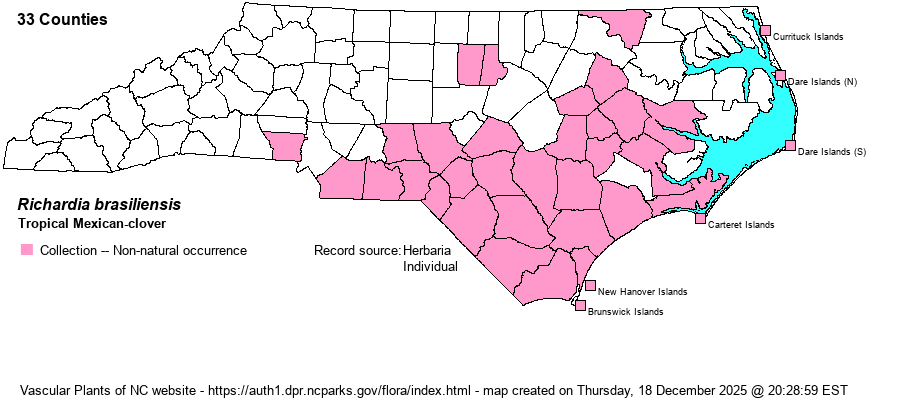| Author | Gomes | |
| Distribution | Throughout most of the Coastal Plain, Outer Banks/barrier islands, Sandhills, and southern Piedmont; scarce in the northern Piedmont, and not found in the Mountains.
Native of South America; in N.A. NJ and PA south to FL and TX; inland to TN. | |
| Abundance | Frequent to common throughout its NC range, except rare in the northern Piedmont. | |
| Habitat | Dry sandy soil of roadsides, driveways, yard weed, waste places, vacant lots, campus weed, fallow cropfields. | |
| Phenology | Flowering and fruiting May-November. | |
| Identification | Tropical Mexican-clover is a perennial from a long taproot, with ascending to sprawling branched stems. The leaves are opposite, lance-shaped or elliptical, pointed, with impressed veins on the upper side. The flowers grow in dense terminal clusters, petals usually 6, white. It is very similar to R. scabra, but the leaves are hairy on both sides across the whole surface (vs. hairy only on the midrib and margins). The stems in this species are quite hirsute throughout their length; in R. scabra they are hirsute mostly near the tips, and are progressively less hairy toward the base. Both species have similar ranges in the state and are both reasonably common and often found. | |
| Taxonomic Comments | | |
| Other Common Name(s) | | |
| State Rank | SE * | |
| Global Rank | G5 | |
| State Status | | |
| US Status | | |
| USACE-agcp | | |
| USACE-emp | | |

